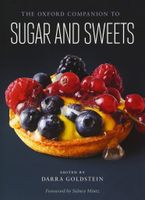Advertisement
Puddings
Published 2015
In the sixteenth century, currants, dates, and sugar were added to the mixtures of meat or blood—spices and fat that hitherto had been used to stuff the animal guts that made the original sausage-like puddings. Shortly afterward, a more convenient alternative, the pudding cloth, came into use, which meant boiled puddings could be made at any time. It was cited in a contemporary recipe for Cambridge pudding—breadcrumbs, flour, dried fruits, suet, eggs, sugar, milk, and butter, wrapped in a cloth and boiled, ancestor to the plum pudding. Suet was the last link to the original meat pudding. In his


